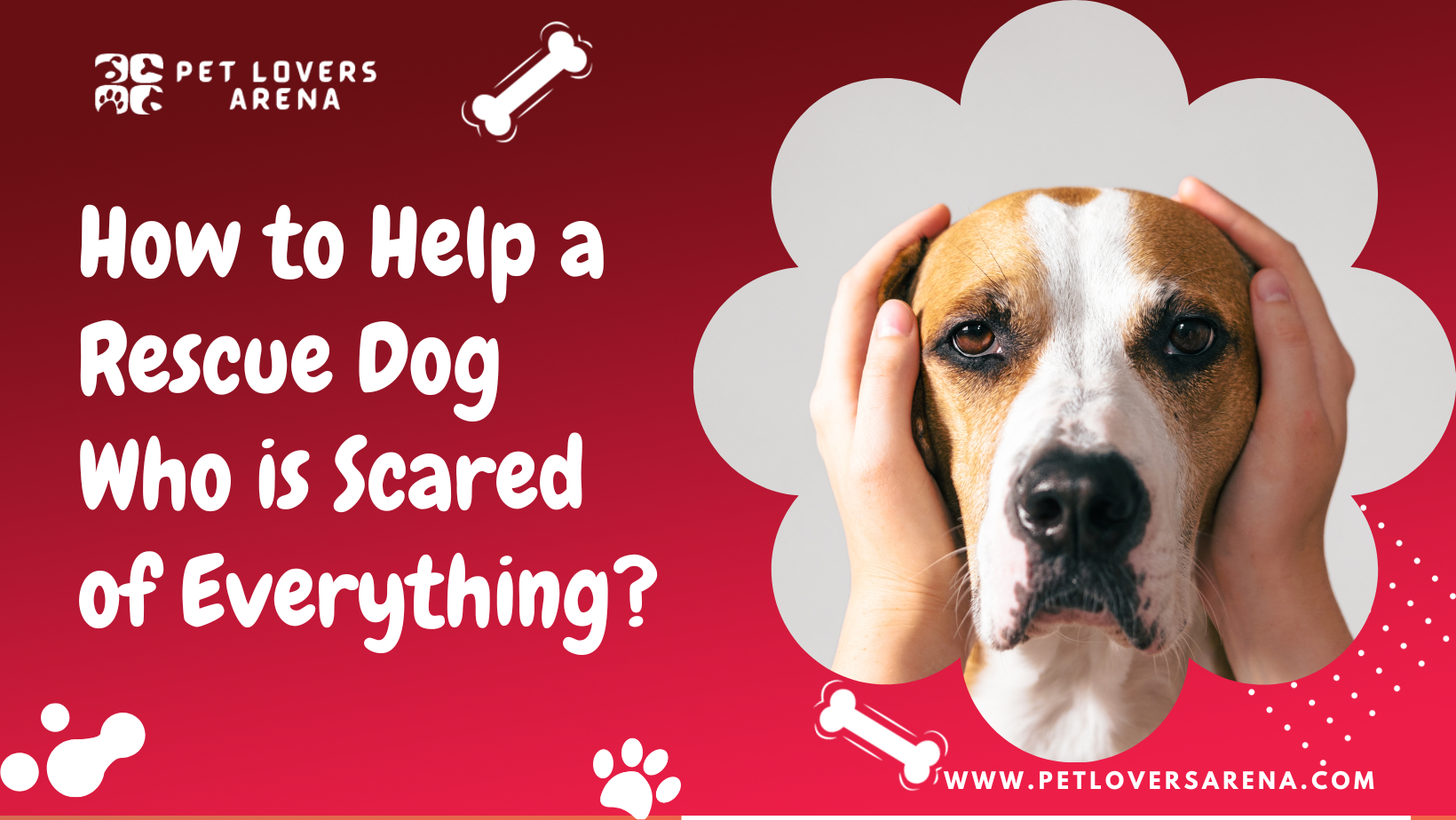If you’ve recently adopted a rescue dog, you might wonder why they seem scared of everything. It’s common for dogs to be fearful after being rescued, especially if they’ve experienced trauma or neglect. However, there are ways to help your rescue dog adjust to their new home and feel more comfortable in their surroundings.
Understanding rescue dog behavior is the first step in helping your furry friend overcome their fears. Some common signs that a dog is scared include trembling, hiding, excessive barking, and aggression. It’s essential to give your dog plenty of space and time to adjust to their new environment and to avoid overwhelming them with too much attention or affection too soon.
Key Takeaways:
- Rescue dogs may be scared of everything due to past trauma or neglect.
- Signs of a scared dog include trembling, hiding, excessive barking, and aggression.
- Give your dog space and time to adjust, and avoid overwhelming them with too much attention too soon.
Understanding Rescue Dog Behavior
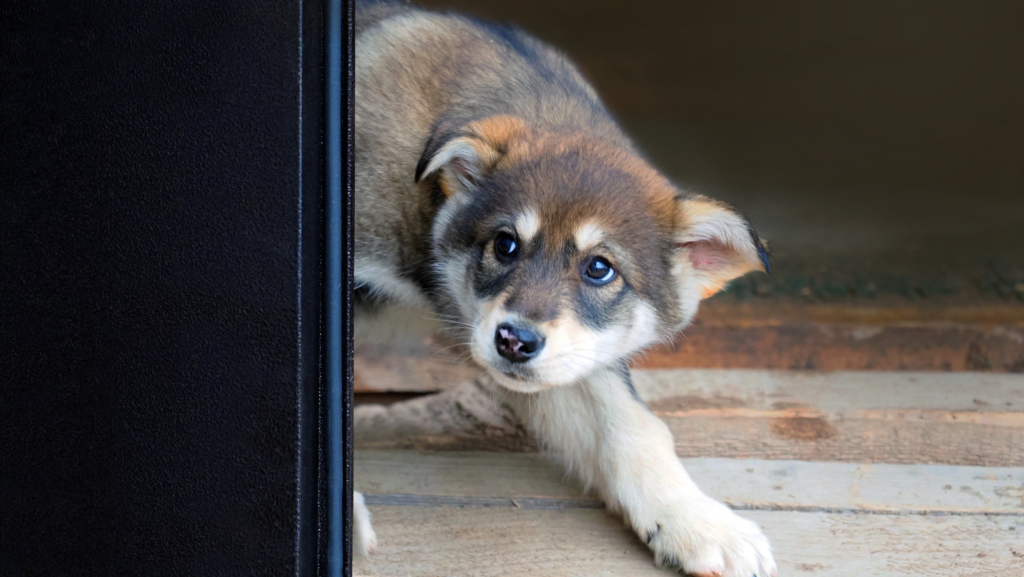
When you adopt a rescue dog, it’s important to understand their behavior so you can help them feel safe and secure in their new home. Rescue dogs often come from situations that have caused them stress, anxiety, and fear. This can result in behaviors that may seem unusual or concerning to new owners.
One of the most important things to understand is that rescue dogs can exhibit a wide range of behaviors. Some may be shy and withdrawn, while others may be overly energetic and excitable. It’s important to take the time to get to know your new dog and learn its individual personality and behavior patterns.
Here are some common signs and body language you may see in a rescue dog:
- Cowering or hiding
- Growling or barking
- Tail tucked between legs
- Pacing or restlessness
- Excessive licking or chewing
- Avoiding eye contact
It’s important to remember that these behaviors do not reflect your dog’s personality or character. Instead, they are a response to their past experiences and the new environment they find themselves in.
Understanding canine body language can also help interpret your rescue dog’s behavior. For example, a wagging tail does not always mean a dog is happy. A low, slow wag may indicate fear or uncertainty, while a high, fast wag may indicate excitement or arousal.
When working with a rescue dog, being patient, consistent, and understanding is important. Positive reinforcement training can be a great way to build trust and confidence in your new dog. This involves rewarding good behavior with treats, praise, and affection.
What are the Signs that Show the Dog is Scared?
When you adopt a rescue dog, it is important to understand that they may have experienced trauma in the past. This trauma can lead to fear and anxiety, manifesting in various ways. Here are some signs that your rescue dog may be scared:
- Trembling: If your dog is shaking, it could signify fear or anxiety. This can happen when they are exposed to new people, places, or situations they are not used to.
- Shrinking back when you try to pet him: If your dog is scared, it may shrink back when you try to pet them. This indicates that they are uncomfortable and may not trust you yet.
- Hiding under the sofa or bed: If your dog is hiding under the couch or bed, it is a sign that they are feeling scared or anxious. They may feel safer in a small, enclosed space where they can hide from perceived threats.
- Whining, growling, or producing muffled barks: If your dog is making noises that indicate fear or anxiety, such as whining, growling, or having muffled barks, it is a sign that they are scared.
- Seems very sad and will not eat: If your dog looks pretty discouraged and will not eat, it is a sign of feeling extraordinarily anxious or scared. This can happen when they are in a new environment or have experienced trauma in their past.
- Barks incessantly: If your dog is barking incessantly, it could be a sign of fear or anxiety. They may be trying to alert you to perceived threats or trying to protect themselves.
- Pacing: If your dog is pacing around the room, it is a sign that they are feeling anxious or scared. They may be trying to find a way to escape the situation or environment that is causing them distress.
- Inappropriate elimination: If your dog is urinating or defecating in the wrong places, it is a sign that they are feeling anxious or scared. They may be marking their territory or trying to communicate their distress to you.
- Tail tucking: If your dog is tucking their tail between their legs, it is a sign that they are feeling scared or anxious. They may try to protect themselves or signal they are not a threat.
- Lip licking or yawning frequently: It could be a sign of anxiety or stress if your dog licks their lips or yawns frequently. They may be trying to calm themselves down or signal that they are feeling uncomfortable.
Reasons Why Dogs Are Scared?
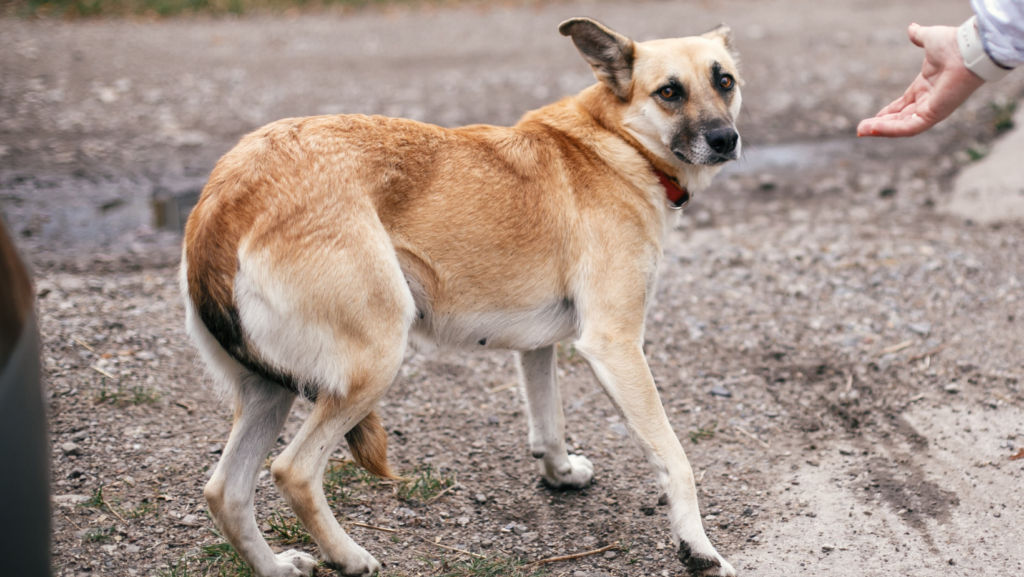
If you have adopted a rescue dog scared of everything, it is important to understand the reasons behind their fear. Here are some of the common reasons why dogs are scared:
1. Traumatic Past Experiences
Dogs who have experienced traumatic events in the past are more likely to be scared of everything. They may have been abused, neglected, or abandoned, which can lead to fear and anxiety. In some cases, they may have been exposed to loud noises, such as fireworks or thunderstorms, which can also trigger fear.
2. Lack of Socialization
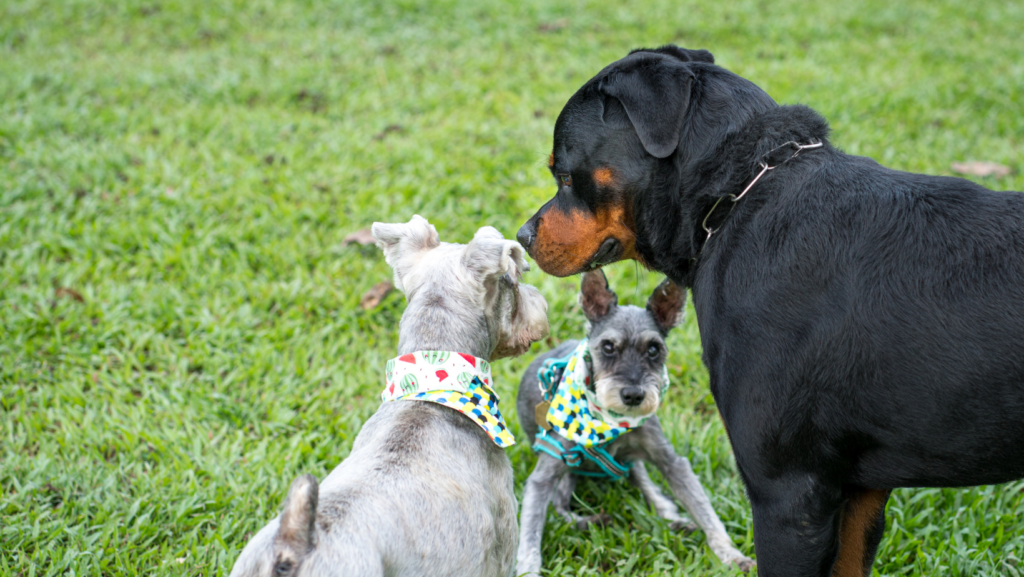
Dogs must be socialized to become familiar with new people, animals, and environments. Socialization is the process of exposing a dog to different experiences, people, and animals in a positive way. This helps them to become more confident and less fearful.
3. Genetic Predisposition
Some dogs may be genetically predisposed to fear and anxiety. Certain breeds, such as the Chihuahua and the Shih Tzu, are known to be more anxious than others. However, it is important to note that genetics are not the only factor contributing to dogs’ fear and anxiety.
4. Medical Conditions
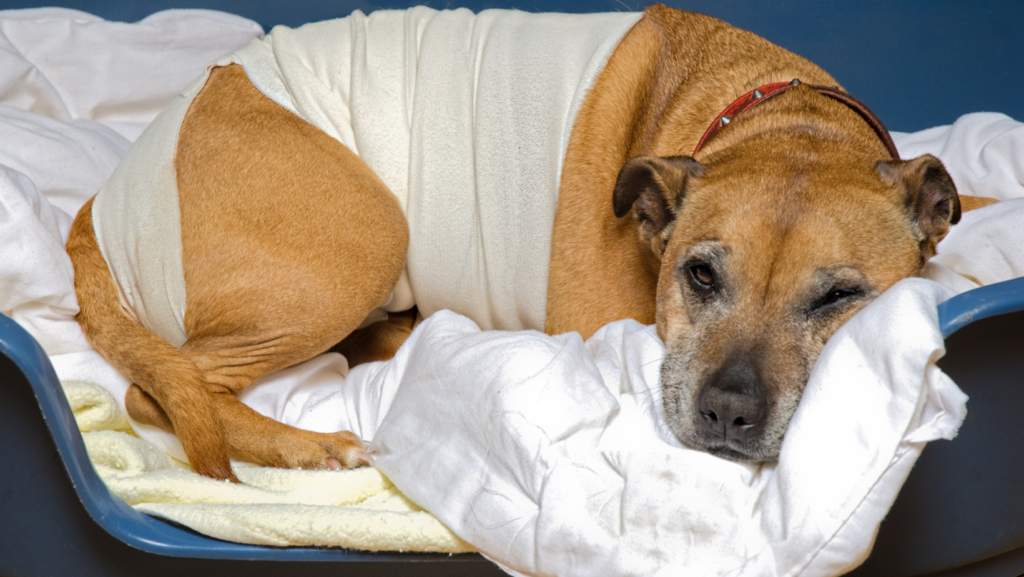
In some cases, fear and anxiety in dogs may be caused by medical conditions. For example, dogs with hearing loss may become more fearful because they cannot hear what is happening around them. Dogs with vision problems may also become more afraid because they cannot see potential threats.
Understanding the reasons behind your rescue dog’s fear can help you to provide them with the right kind of care and support. With patience, love, and proper training, you can help your rescue dog overcome their fears and become a happy and confident companion.
What Can You Do To Deal With The Problem?
If you have adopted a rescue dog scared of everything, you may wonder how to help them feel more comfortable and confident in their new home. Here are some tips to help you deal with this problem:
1. Prepare a Quiet Room or Area for Your New Dog
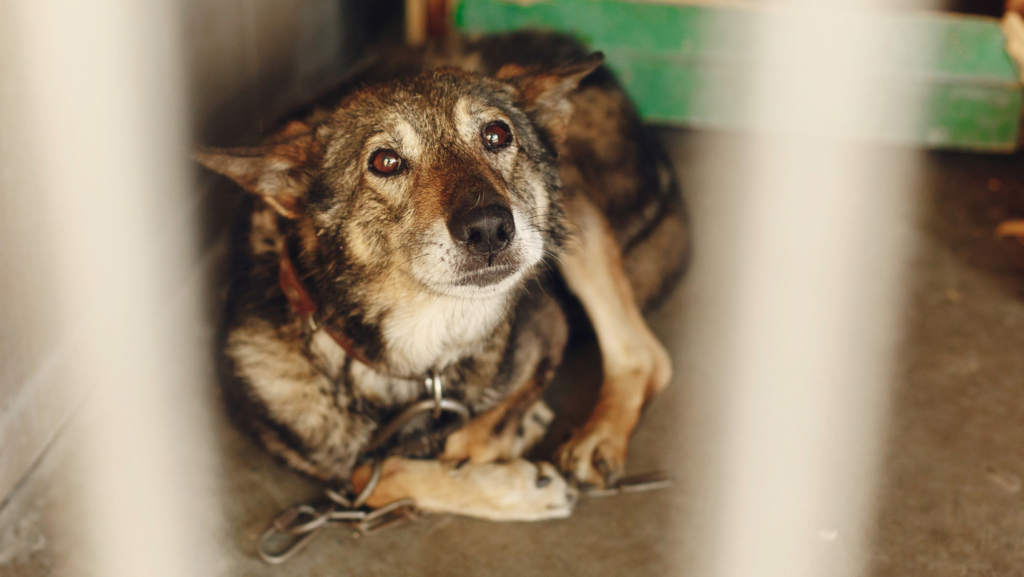
Set up a quiet room or area where your new dog can feel safe and secure. This can be a crate or a room with a comfortable bed, toys, and water. Ensure the area is away from loud noises and other pets or people.
2. Go Slowly! He May Need Several Days to Adjust
Taking things slow with a rescue dog scared of everything is important. Give them time to adjust to their new surroundings, and don’t force them to do anything they’re uncomfortable with. It may take several days or weeks for your new dog to feel comfortable in their new home.
3. Everything Requires Patience
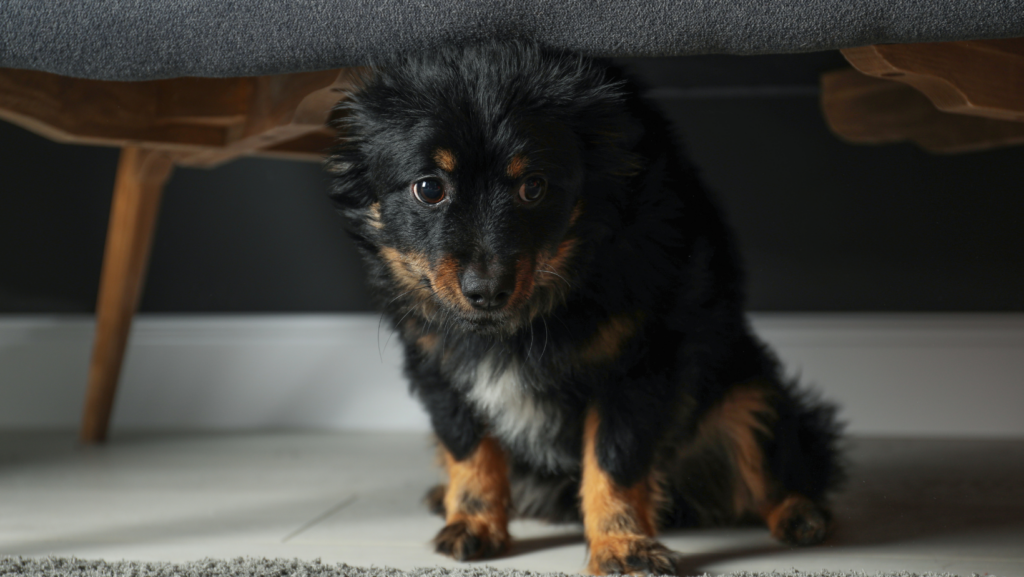
Dealing with a scared rescue dog requires patience. Don’t rush things; give your dog time to adjust at their own pace. Be patient and consistent in your interactions with them.
4. Allow Him to Make Choices
Allow your rescue dog to make choices and decisions on their own. This can help them feel more in control and less anxious. For example, let them choose which toy to play with or which direction to walk in.
5. Give Your New Rescue Dog Plenty of Space

Rescue dogs that are scared of everything need plenty of space to feel safe and secure. Don’t overwhelm them with attention or affection; this can be overwhelming and scary. Give them ample room to explore and get used to their new surroundings.
6. Don’t Force Your Dog to Do Anything that Seems to Terrify Him
If your rescue dog seems terrified of something, don’t force them to face it. This can worsen their fear and damage the trust between you and your dog. Instead, work on building their confidence slowly and gradually.
7. Slowly Build Trust
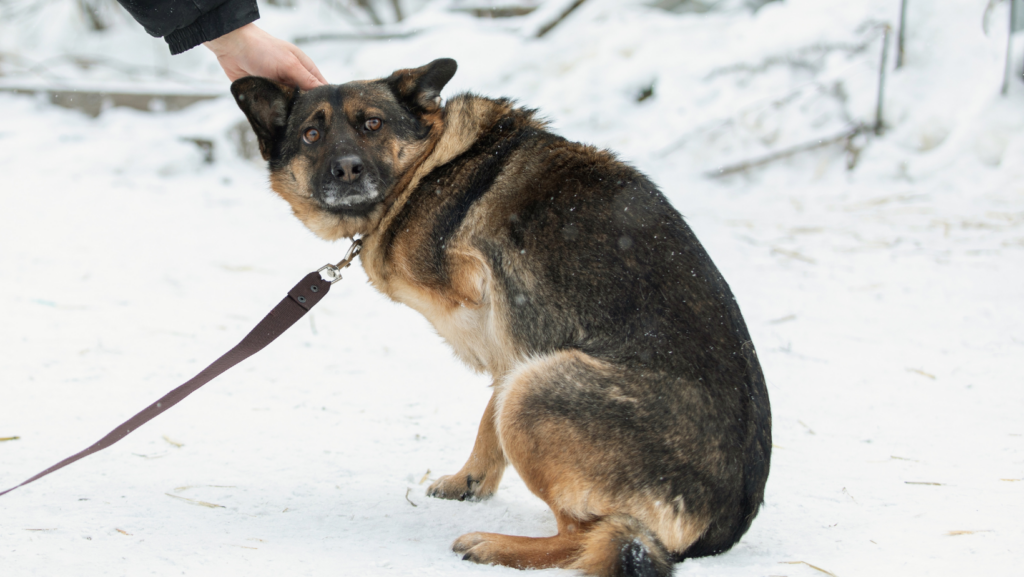
Building trust with a scared rescue dog takes time and patience. Start by spending time with your dog, offering treats and praise, and working on basic obedience training. As your dog becomes more comfortable with you, you can start to work on building their confidence in other areas.
8. Invest in Calming Aids
Calming aids such as pheromone sprays, diffusers, and supplements can help reduce anxiety in rescue dogs. Talk to your vet about which products may be suitable for your dog.
9. Keep Track Of Any Fears That Can Be Worked On
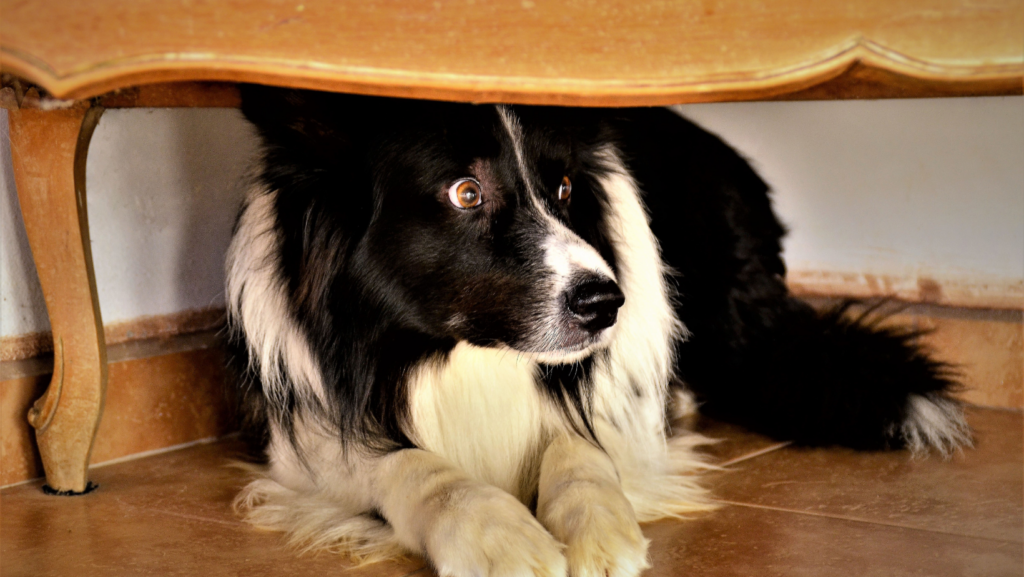
Please record any fears or anxieties your rescue dog has, and work on ways to alleviate them. For example, if your dog is scared of other dogs, work on gradually introducing them to other dogs in a controlled environment.
10. Hire A Professional When Needed
If your rescue dog’s fear and anxiety are severe, consider hiring a professional dog trainer or behaviorist. They can work with you and your dog to develop a personalized training plan to help alleviate their fears and build confidence.
Remember, dealing with a scared rescue dog takes time, patience, and understanding. You can help your new dog feel safe and secure in their new home with the right approach and plenty of love.
The 3-3-3 Rule in Rescue Dog Adjustment
When you bring home a rescue dog, it’s important to understand that they may be scared or anxious. This is where the 3-3-3 rule comes in. The 3-3-3 rule is a general guideline representing the phases of a rescue dog or common milestones your new dog or puppy will go through.
The 3-3-3 rule means the first 3 days, 3 weeks, and 3 months after bringing your dog home from the shelter. The 3-3-3 rule is also known as the “rescue dog honeymoon period.”
During the first 3 days, your dog may be scared and unsure of their new surroundings. This is entirely normal. It’s important to give your dog space and time to adjust. During this time, make sure to keep your home quiet and calm.
Avoid inviting too many guests over or introducing your dog to other pets. This can be overwhelming for your dog.
The next phase of the 3-3-3 rule is the first 3 weeks. During this time, your dog may leave their shell and become more comfortable in their new home. However, they may still be scared of certain things or people.
It’s important to continue to give your dog space and time to adjust. Establish a routine for your dog, such as feeding times and walks. This will help them feel more comfortable and secure.
The final phase of the 3-3-3 rule is the first 3 months. Your dog should feel more comfortable in their new home by this time. It’s important to be patient with your dog and give them the necessary space. You can introduce your dog to new people and pets during this time. However, make sure to do this slowly and carefully.
Training Techniques for Fearful Dogs
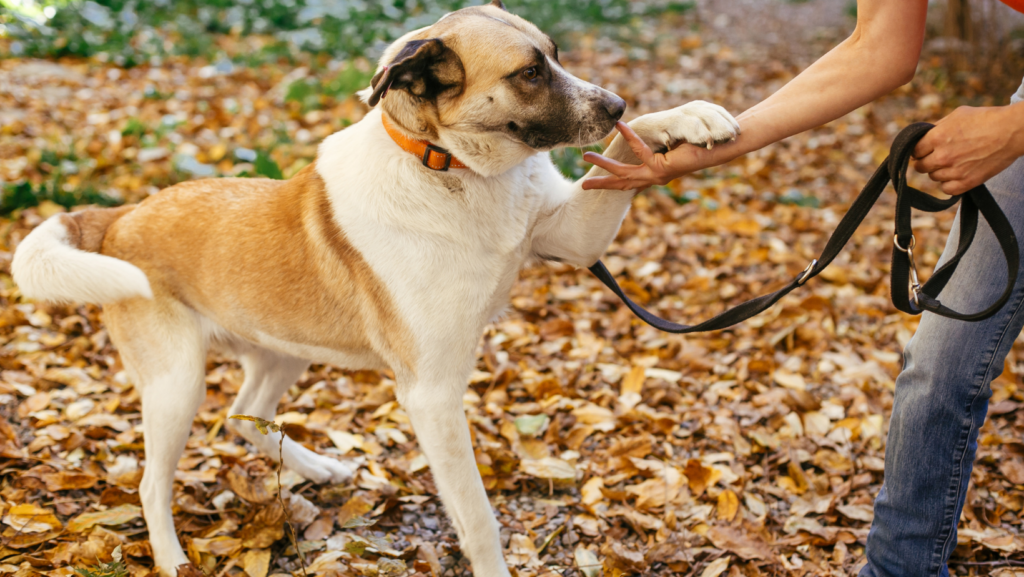
Training a fearful dog can be challenging, but you can help your rescue dog overcome their fears with patience and the proper techniques. In this section, we will discuss two training techniques that can be effective for fearful dogs: desensitization and counterconditioning.
1. Desensitizing to Specific Triggers
Desensitization involves gradually exposing your dog to the things that trigger their fear in a controlled and safe manner. This can help your dog become more comfortable and less reactive to those triggers.
To desensitize your dog to specific triggers, follow these steps:
- Identify the trigger: Observe your dog and note what triggers their fear response. Is it a particular noise, object, or situation?
- Start small: Start with a low-intensity version of the trigger, such as a noise recording or a distant view of the object.
- Reward calm behavior: Reward your dog for calm behavior in the presence of the trigger, such as sitting or lying down.
- Gradually increase intensity: Over time, gradually increase the power of the trigger while rewarding calm behavior.
- Repeat: Repeat the process until your dog is comfortable with the trigger at its full intensity.
2. Dealing with New People and Loud Noises
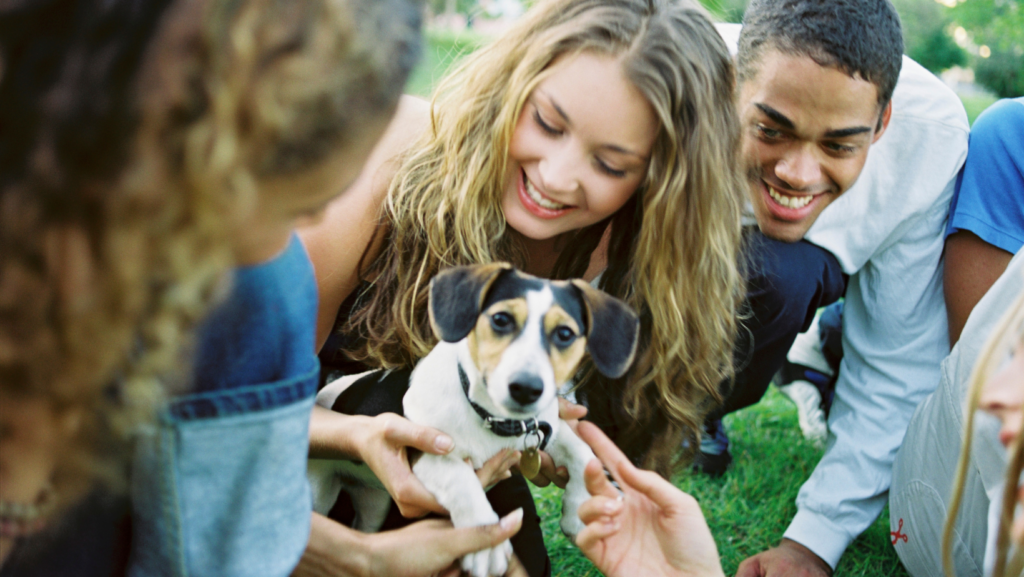
New people and loud noises can be particularly challenging for fearful dogs. Here are some tips for helping your dog become more comfortable with these triggers:
- Start with a calm environment: Begin training in a quiet environment where your dog feels safe and comfortable.
- Use positive reinforcement: Reward calm behavior with treats and praise.
- Gradually increase exposure: Introduce your dog to new people and loud noises gradually, starting with low-intensity versions and increasing exposure over time.
- Provide a safe space: Provide your dog with a safe distance, such as a crate or a designated room, where they can retreat if they feel overwhelmed.
- Be patient: Training a fearful dog takes time and patience. Take your time with the process, and be prepared to adjust your approach as needed.
Role of Foster Homes
Foster homes are crucial in helping rescue dogs who are scared of everything. When a dog is surrendered or rescued, it may be traumatized and terrified due to past experiences. Foster homes provide a safe and comfortable environment for these dogs to heal and adjust to their new life.
Foster homes provide a temporary home for rescue dogs until they find their forever home. The foster parent helps the dog adjust to their new environment and routine during this time. They also provide love, care, and attention to the dog, which helps build trust and confidence.
Foster homes also help the rescue organization understand the dog’s behavior and personality. The foster parent can provide valuable insights into the dog’s likes, dislikes, fears, and triggers. This information helps the organization find the best forever home for the dog.
If you are considering fostering a rescue dog scared of everything, it is important to understand the commitment involved. You must be patient, understanding, and willing to work with the dog to help them overcome their fears. You must also provide a safe and comfortable environment for the dog to heal and adjust.
Interactive Games and Bonding
Playing interactive games with your rescue dog is a great way to bond and build trust. These games can help your dog overcome fears and anxieties while providing mental stimulation and physical exercise. Here are some interactive games that you can try with your rescue dog:
1. Hide and Seek
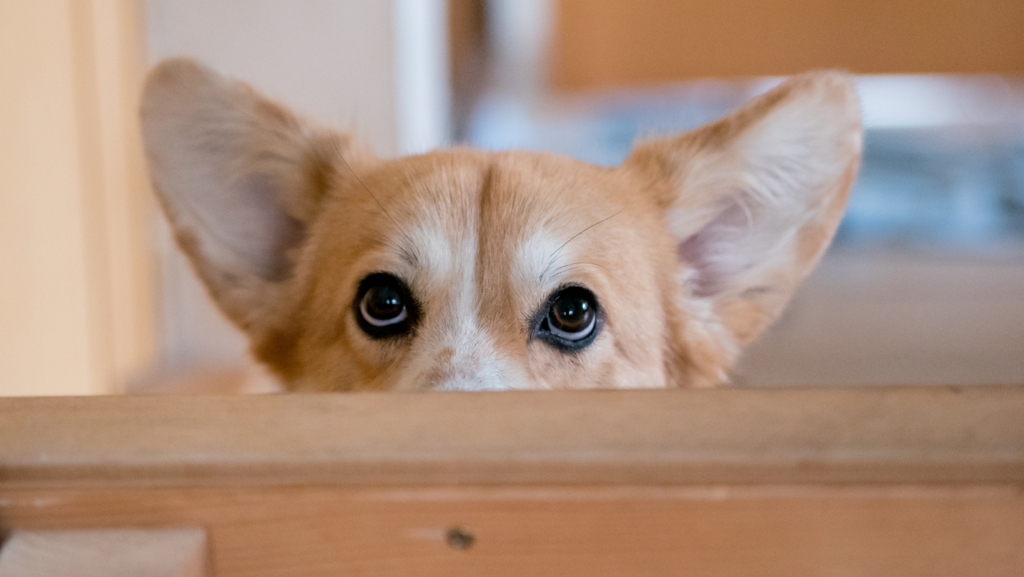
Hide and Seek is a fun game that can help your rescue dog build confidence and trust in you. Start by hiding behind furniture or in another room and calling your dog’s name. When they find you, reward them with a treat or praise. As your dog becomes more confident, you can make the game more challenging by hiding in different places or having someone else hide with you.
2. Tug of War
Tug of War is an excellent game for building trust and bonding with your rescue dog. Use a rope or other tug toy and play with your dog, letting them win occasionally. This game can help your dog build confidence and trust in you as their playmate.
3. Fetch
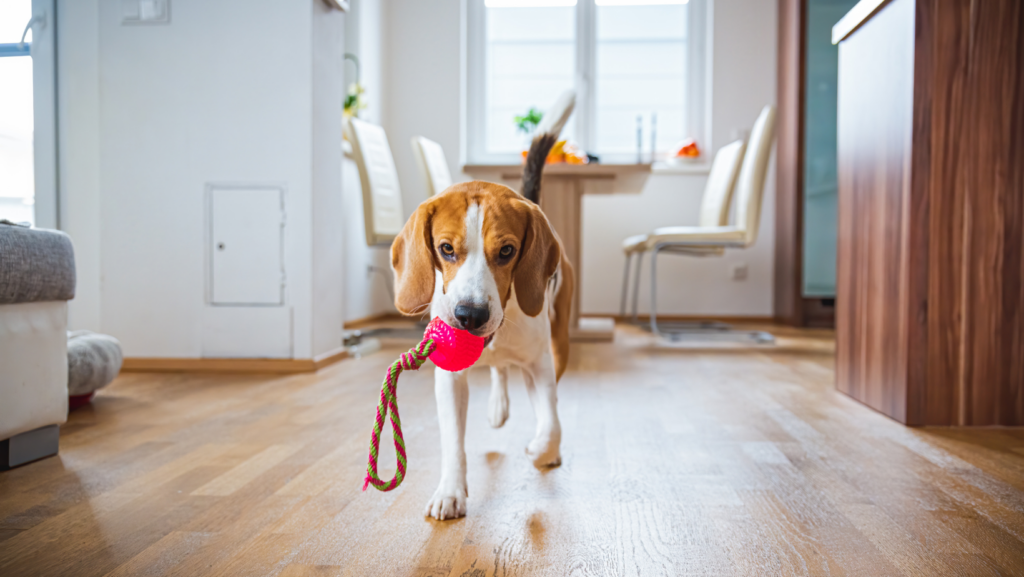
Playing fetch is a classic game that can stimulate your rescue dog mentally and physically. Start by throwing a ball or toy a short distance and gradually increase the distance as your dog becomes more confident. This game can also help your dog build trust in you as they learn to bring the toy back to you.
4. Puzzle Toys
Puzzle toys are a great way to provide your rescue dog with mental stimulation and help them overcome their fears and anxieties. These toys can be filled with treats or food, requiring your dog to work for the reward. Puzzle toys can also help your dog build trust in you as they learn you are the one providing the prizes.
Sensitive Areas in Scared Dogs
When it comes to helping a rescue dog that is scared of everything, it is important to understand that certain areas can trigger fear and anxiety in them. These sensitive areas can vary from dog to dog, but there are some common ones that you should be aware of.
1. Ears
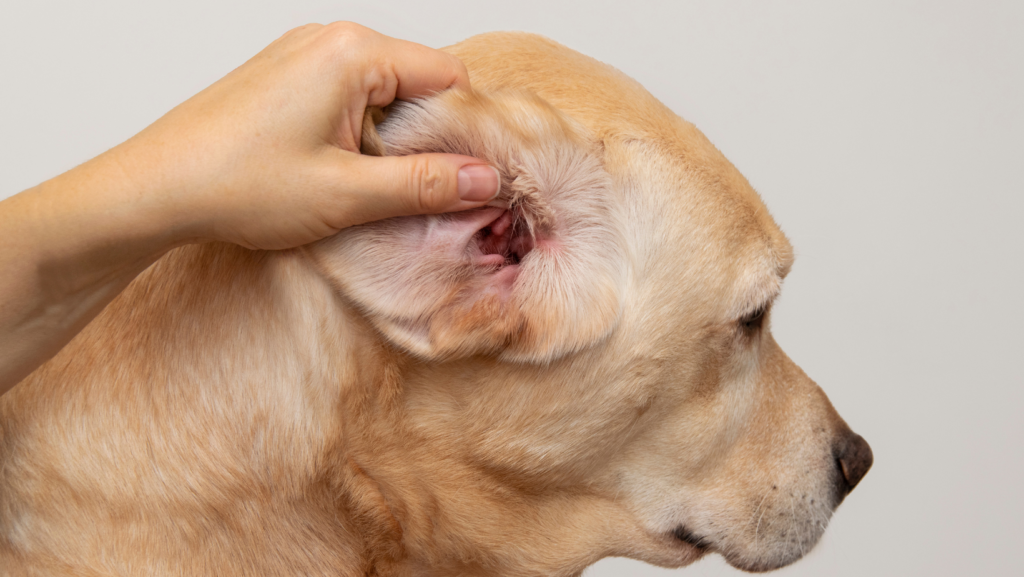
Dogs have susceptible ears, and loud noises can be frightening. If your rescue dog is scared of loud noises, such as thunderstorms or fireworks, keeping them in a quiet, safe place during these events is important. You can also try using earplugs or white noise to help drown out the noise.
2. Paws
Some rescue dogs may have had negative experiences with their paws, such as being hit or kicked. As a result, they may be sensitive about touching or handling their feet. If your rescue dog is scared of having their paws touched, it is important to approach them slowly and gently. You can also use treats or toys as a distraction.
3. Tail
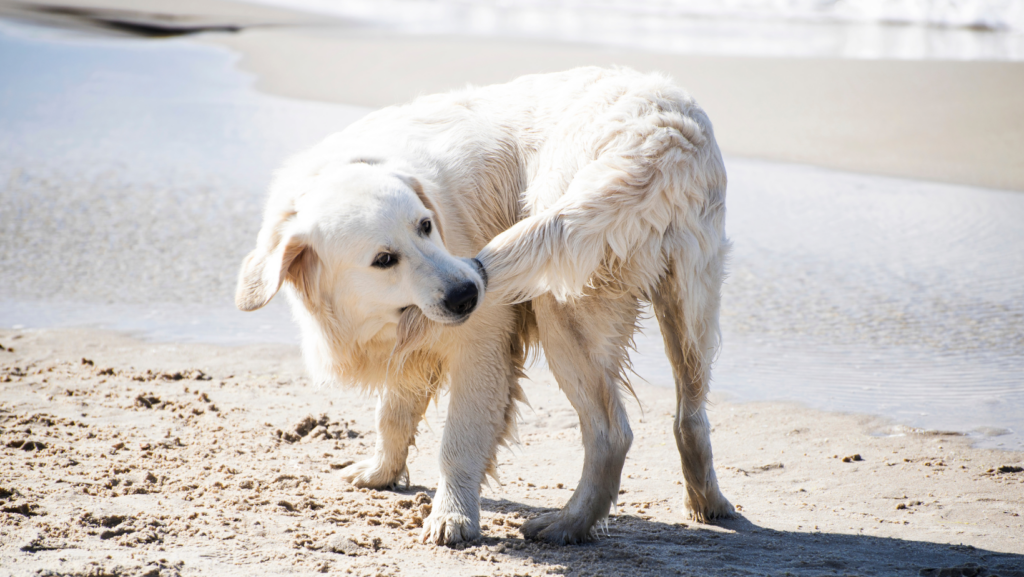
A dog’s tail can be a good indicator of its emotional state. If your rescue dog is scared or anxious, their tail may be tucked between their legs or held low. It is important to approach them calmly and avoid sudden movements that could startle them.
4. Face
Some rescue dogs may be sensitive about having their face touched or approached. This can be due to past experiences of being hit or abused. If your rescue dog is scared of having their face touched, it is important to approach them slowly and gently.
5. Stomach
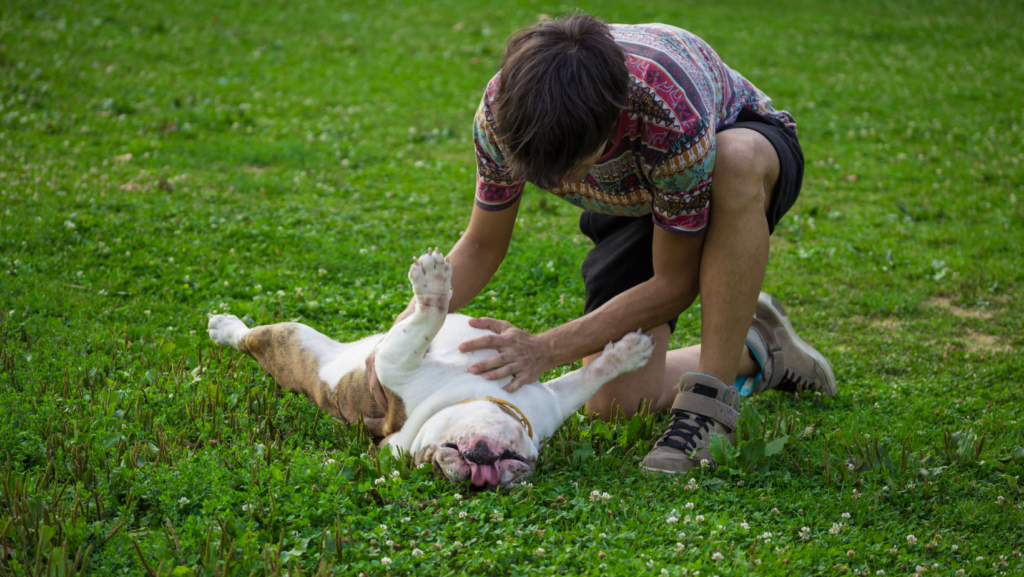
Some rescue dogs may be sensitive about having their stomach touched or approached. This can be due to past experiences of being hit or kicked. If your rescue dog is scared of having their stomach felt, it is essential to approach them slowly and gently.
FAQ’s
If you have adopted a rescue dog that is scared of everything, there are several ways you can help them. First, give them ample space and time to adjust to their new surroundings. Provide a safe and quiet space for them to retreat when overwhelmed. Slowly introduce them to new people, places, and experiences, and reward them with treats and praise for their bravery. Consistency and patience are key when helping a scared rescue dog.
There are several ways to calm an anxious rescue dog. One way is to provide them with a consistent routine, including regular feeding times, exercise, and playtime. You can also try using calming aids such as pheromone sprays, diffusers, or calming music. Additionally, you can use positive reinforcement training techniques to help your dog feel more confident and secure.
There are many reasons why an adopted dog may be scared of everything. It could be due to a lack of socialization during their critical development period, traumatic experiences in their past, or simply a lack of exposure to new experiences. It’s important to be patient and understanding with your dog and to work with them to help build their confidence and trust.
If your rescue dog hides in a corner, giving them space and time to come out on their own is important. Don’t force them out of their hiding spot, as this can make them feel even more scared and anxious. Instead, provide them with a comfortable bed or blanket in their hiding spot, and try to make it a more inviting space by adding toys and treats. Gradually work on building their confidence and trust through positive reinforcement training.
Building trust with a scared rescue dog takes time and patience. Start by establishing a consistent routine and providing your dog with a safe and comfortable space. Use positive reinforcement training techniques to reward your dog for good behavior and gradually introduce them to new experiences and people. Be patient and understanding, and don’t rush the process.
With time, patience, and consistent training, many rescue dogs can overcome their fears and become more confident and secure. However, it’s important to remember that every dog is different, and some may take longer to adjust. Be patient and understanding with your dog, and work with them to help build their confidence and trust.
Conclusion
Helping a rescue dog that is scared of everything can be a challenging process, but it is also a rewarding one. By providing a safe and secure environment, offering patience and understanding, and using positive reinforcement techniques, you can help your furry friend overcome their fears and build confidence.
Meet Fabian Wright, our guide into the animal realm at PetLoversArena.com. Having served as an Animal Care Specialist for the Ruwenzori Team at the Kansas City Zoo, he prioritizes conserving exotic species by replicating their habitats. Fabian aspires to share captivating stories of creatures, big and small, through PetLoversArena.com.

